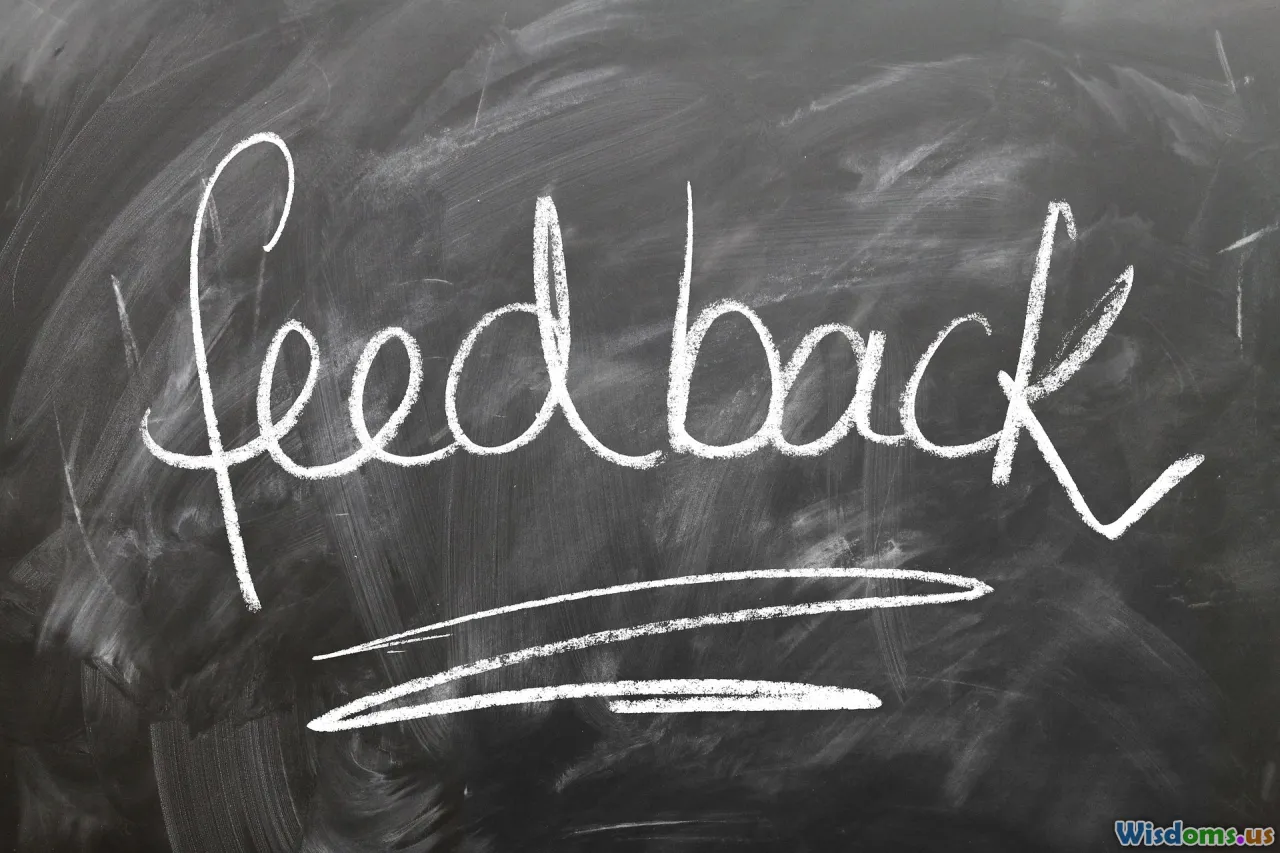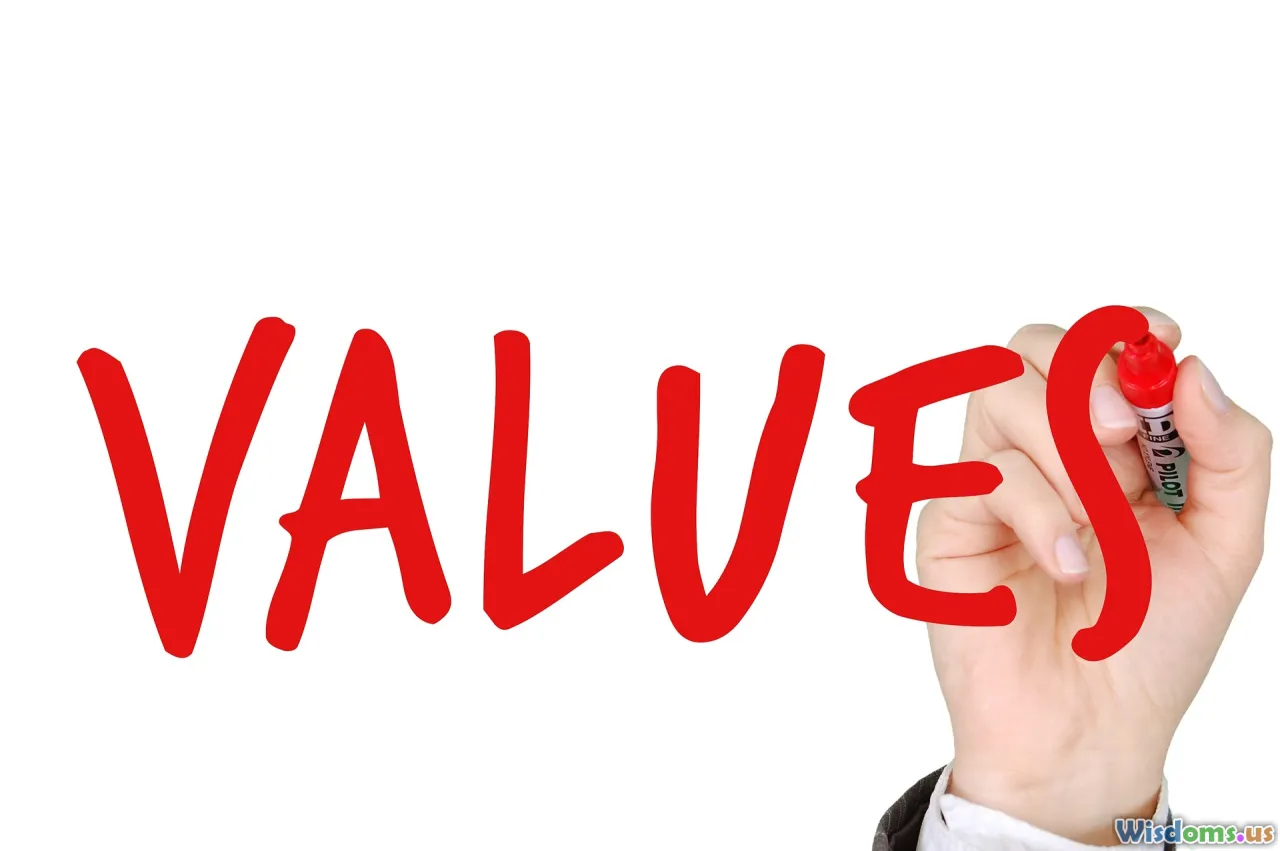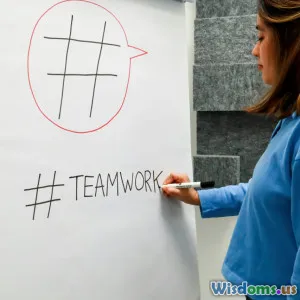
What Mistakes Sabotage Your Decision Making Process
18 min read Explore common mistakes that undermine effective decision making and learn strategies to improve your choices with actionable advice and real-world examples. (0 Reviews)
What Mistakes Sabotage Your Decision Making Process?
Decision making is at the core of every successful endeavor—personal or professional. From hiring choices in business to career mapping and investment analysis, strong decisions fuel progress while poor decisions haunt for years. Yet even skilled leaders, entrepreneurs, and scientists fall prey to mental traps and systematic mistakes that undermine their best intentions. Understanding these pitfalls is the first step towards mastery.
The Trap of Overconfidence

Countless studies demonstrate a widespread human tendency: we routinely overrate our own knowledge and judgment. Overconfidence is insidious because it's invisible while we make choices, often only revealing itself in hindsight—usually when things have gone awry.
Consider the example of the Challenger Shuttle disaster in 1986. Managers at NASA, backed by their technical team, pressed ahead despite engineers flagging the O-rings’ vulnerability in cold weather. Overconfidence in previous successful launches and the team's expertise led them to discount genuine risk. The tragic result stands as a powerful reminder: too much confidence not only blurs realistic assessment but suppresses dissent—even among experts.
Avoiding the trap:
- Regularly solicit and reward contrarian viewpoints in team meetings.
- Practice humility by reviewing previous "sure-thing" decisions that failed, examining root causes candidly.
- Seek out data and feedback that may directly contradict your own judgment before finalizing choices.
Analysis Paralysis: Stuck in the Search for Certainty

When stakes are high, it’s tempting to chase perfect information. Analysis paralysis refers to an inability to decide because of excessive data gathering or over-analysis. This stalling tactic subtly sabotages progress, as opportunities in the real world rarely wait long for deliberation.
A classic corporate example involved Yahoo in the early 2000s. The company agonized over whether to acquire Google. Their need for more certainty and concern over complex integration outlasted the window for a decision, resulting in no action—a blunder cited as one of the most expensive in modern tech.
Actionable tips for avoiding paralysis:
- Set a clear deadline for making difficult decisions—and stick to it.
- Identify minimum viable data: what must be known versus what is simply 'nice to have.'
- Use the 70% rule recommended by former Amazon CEO Jeff Bezos: Move forward once you have around 70% of the required information, accepting that complete certainty is impossible.
Anchoring Bias: The Weight of Initial Information

Every second, our brains seek shortcuts to handle complex choices. One mental shortcut, or "heuristic," is anchoring: the human tendency to rely heavily on the first information—no matter how random or irrelevant—when judging later possibilities.
Research shows that real estate valuations, negotiation outcomes, and even judicial sentences can be deeply swayed by arbitrary initial figures. Daniel Kahneman and Amos Tversky's famous studies proved how easily people adjust their answers in line with pre-set "anchors," even if those anchors are meaningless.
In practical terms, if an employee is first offered a relatively low starting salary, future raises or negotiations will subconsciously cling to that figure—limiting their lifetime earnings.
How to counteract anchoring:
- Always question first offers and investigate alternative reference points.
- In negotiations, propose your own data-backed anchors early.
- Take a pause to reflect on how much your decisions lean on a single piece of early information—and challenge its relevance.
Confirmation Bias: Seeing Only What We Want

Confirmation bias drives us to seek out, notice, and remember evidence that aligns with our preconceived notions while ignoring details that challenge our beliefs. This bias distorts how we process facts and assess outcomes. For instance, a manager convinced that remote work harms productivity might disproportionately focus on the rare mishaps, while disregarding evidence to the contrary.
This effect is magnified by our digital environments. Algorithms on social media and search engines personalize content, reinforcing our echo chambers and deepening mental ruts. In investing, confirmation bias leads to double-down errors—people ignore warning signs on failing stocks in favor of cherry-picked positive reports.
Practical advice:
- Assign someone as a 'devil’s advocate' during key discussions.
- Systematically gather opposing evidence before deciding.
- Regularly revisit and challenge your core assumptions and hypotheses, especially after an outcome.
Short-Term Thinking: The Lure of Immediate Gratification

Our brains are hard-wired to prioritize short-term rewards over long-term outcomes—a trait rooted in evolution but costly in today’s complex world. This is termed temporal discounting or the tendency to value immediate gains disproportionately higher than future benefits.
Retailers successfully exploit this urge with tactics like limited-time discounts or "flash sales." But it's also a hidden saboteur in strategic business choices. Kodak's focus on immediate film revenue blinded them to the importance of digital cameras.
Steering towards longer-term vision:
- Use visualizations: Physically map out likely outcomes in six months, a year, and beyond, not just the next quarter.
- Incentivize long-term performance: Structure goals and rewards to discourage quick fixes in favor of durable results.
- Periodically re-evaluate decisions with longer time frames in mind. Ask: “What will the 5-year impact be?” not just “What’s the result by Friday?”
Groupthink: The Perils of Unanimity

Groupthink occurs when teams value harmony and consensus over critical analysis, leading to ill-advised or risky choices. This was famously identified by psychologist Irving Janis who examined decisions such as the Bay of Pigs invasion and the Watergate cover-up.
Groupthink typically emerges when there's an overpowering leader, high group cohesion, or a strong desire to avoid conflict. Warning signs include self-censorship, the illusion of unanimous agreement, and pressure to conform.
How to battle groupthink:
- Cultivate a culture allowing safe dissent—invite disagreement.
- Appoint impartial outsiders to observe and give feedback on decision routines.
- After consensus appears, intentionally rehearse a “pre-mortem”: What might cause this decision to fail?
Escalation of Commitment: Sunk Cost Fallacy

When we’ve spent time, money, or emotional energy, it’s tough to walk away—even after evidence shows a decision is failing. This is the sunk cost fallacy. The error is rationalizing additional commitment based solely on past investments, not on the prospects of future benefits.
One corporate disaster often cited is the continued development of the Concorde aircraft by British and French governments. Billions were invested long after it was clear the project would never be commercially viable. Political and reputational factors were at play, but so too was a reluctance to "waste" money already spent.
Tips to avoid escalation:
- Establish ahead of time under what conditions you’ll exit a project—define red lines objectively.
- Measure choices only against future costs and anticipated gains, not irrecoverable expenses.
- Seek judgments from people not previously involved in the investment—they’re less vulnerable to sunk costs.
Framing Effect: The Influence of How Choices Are Presented

How a choice is phrased—gain vs. loss, risk vs. reward—deeply influences decision outcomes, even when the underlying data is identical. In medical studies, patients are more likely to accept surgery if it’s described in terms of survival rates rather than mortality rates.
In business, framing a strategy as "gaining additional market share" inspires a different response than "avoiding loss of current dominance," though both may lead to similar actions. Smart marketers and negotiators routinely exploit the framing effect; wise decision makers learn to see beyond it.
Action steps for neutral framing:
- When considering options, reword each choice in both positive and negative terms to see if your preferences shift.
- Challenge proposals phrased to evoke strong emotional reactions.
- Train your team to identify manipulative framing in internal and external communications.
Availability Bias: Favoring What’s At Hand

Availability bias skews choices toward recent events or vivid examples that come easily to mind, rather than a balanced assessment. It explains why people overestimate chances of rare but dramatic occurrences—like plane crashes or lottery wins—simply because those events are memorable.
Consider media coverage of corporate scandals: After a highly-publicized fraud, boards often overcorrect compliance measures, even if the odds of repetition are low. Likewise, investors might shy away from entire sectors following a headline-grabbing downturn, missing future opportunities.
Balancing the bias:
- Maintain systematic records: Use data, not memory, to guide trends and decisions.
- Schedule "buffer" periods between news events and crucial decisions.
- Periodically review large datasets for patterns rather than relying on high-profile anecdotes or recent examples.
Emotional Reasoning: When Feelings Override Facts

Should "going with your gut" ever guide high-stakes judgments? Emotions evolved to help us navigate danger and opportunity quickly, but modern complexity frequently renders these instincts wrong—especially under stress or fatigue.
Take a project manager under tight deadlines: Frustration may lead them to pick an expedient but suboptimal course. Research across multiple fields—policing, medicine, finance—shows strong emotions can dramatically shape not just choices, but also the information we notice and consider.
How to temper impulse with rational review:
- Implement mandatory cooling-off periods for emotional topics.
- Use structured frameworks like decision matrices to focus attention on pre-determined criteria.
- Encourage mindfulness techniques for greater self-awareness among teams and leaders.
Failing to Define Success: Lack of Clear Criteria

Without explicit goals or criteria, teams and individuals find it impossible to select the best path—or even identify if they’ve succeeded. Ambiguity breeds hesitation, misalignment, and endless backtracking. This is a common culprit in complex projects: businesses launch initiatives with only broad aspirations but no specific milestones or ways to measure progress.
For example, a marketing team that wants to "boost engagement" but never defines what metrics—duration, shares, leads, conversions, or something else—will count as success is unlikely to direct resources effectively.
Best practices:
- Always commit to specific, measurable objectives before deciding. Use the SMART framework (Specific, Measurable, Achievable, Relevant, Time-bound).
- Hold regular check-ins to track decision outcomes versus stated criteria.
- When making team decisions, clarify in advance what "winning" looks like for all participants.
The Influence of Time Pressure

Rushing leads to the fast-and-frugal "System 1" thinking Daniel Kahneman warns about—quick, intuitive, and prone to error. Research confirms that time-pressured teams fall prey to snap judgments, reducing accuracy, creativity, and the weighing of alternatives. In aviation, high-pressure cockpit decisions have triggered avoidable tragedies when brief reflection would have saved lives.
Mitigating the risk:
- Separate truly urgent decisions from those that can safely wait. Institute a "pause" step for important but not emergency issues.
- Debrief high-speed choices post-outcome, seeking ways to add a few minutes for reflection in similar encounters.
- Rotate team members in critical roles to avoid cumulative decision fatigue.
Neglecting Diverse Perspectives

Homogeneous groups are faster at reaching consensus, but their solutions are routinely outperformed by diverse teams that challenge norms and introduce new angles. Neglecting to involve team members of different backgrounds, expertise, or roles often yields myopic or culturally insensitive decisions.
Google, for example, faced backlash when its early AI-driven image recognition system failed to identify people of color appropriately—a mistake traceable to non-diverse development teams.
Embedding diversity in practice:
- Proactively seek input from varied departments, ages, and backgrounds—especially on big calls.
- Consider structured panel sessions or expert round-tables in major decisions.
Final Thoughts: Building a Smarter Decision Culture
Every decision—whether small or life-altering—carries the risk of error. The good news: Most decision-making pitfalls are predictable, manageable, and consistently avoidable with the right approaches. By demanding clarity, exposing biases, valuing dissent, defining success, and emphasizing both diversity and measured risk-taking, we edge ever closer to better outcomes.
Professional (and personal) growth depends on examining, understanding, and improving how we decide. With deliberate practice—and vigilance against these common errors—we move from being saboteurs of our own progress to architects of truly excellent choices.
Rate the Post
User Reviews
Popular Posts



















